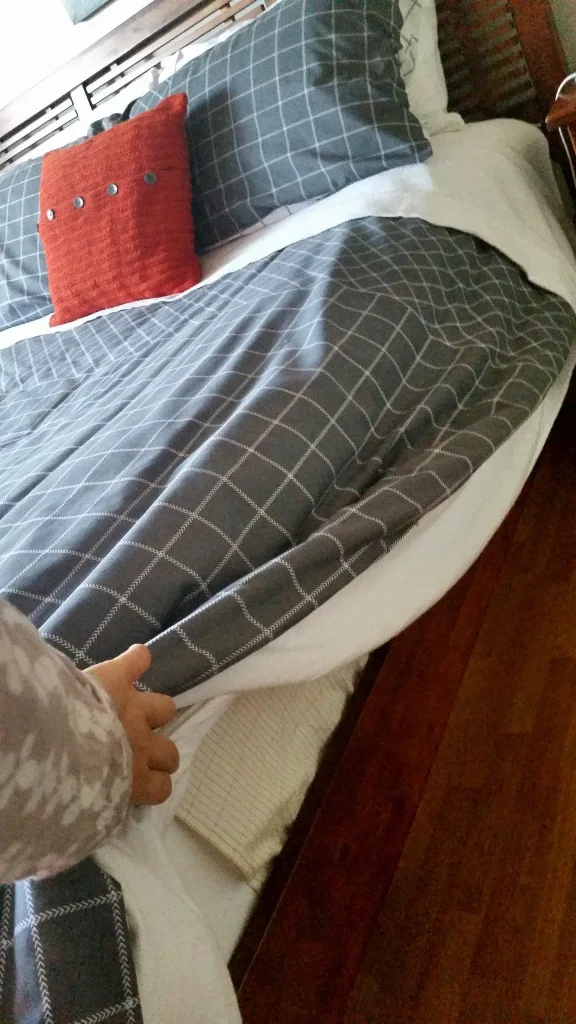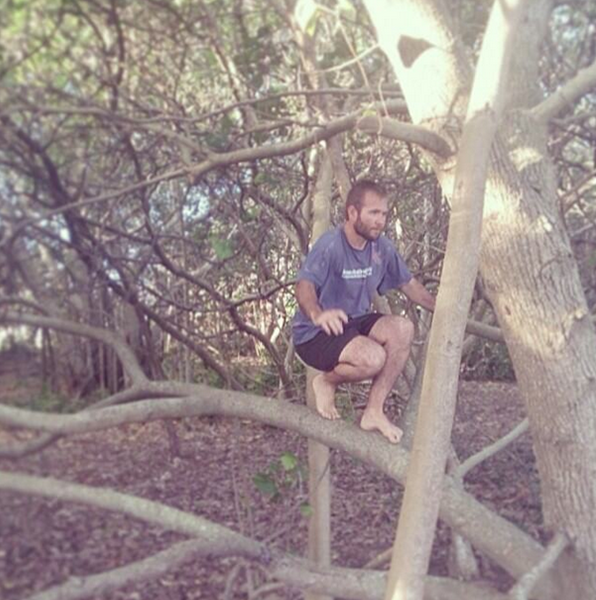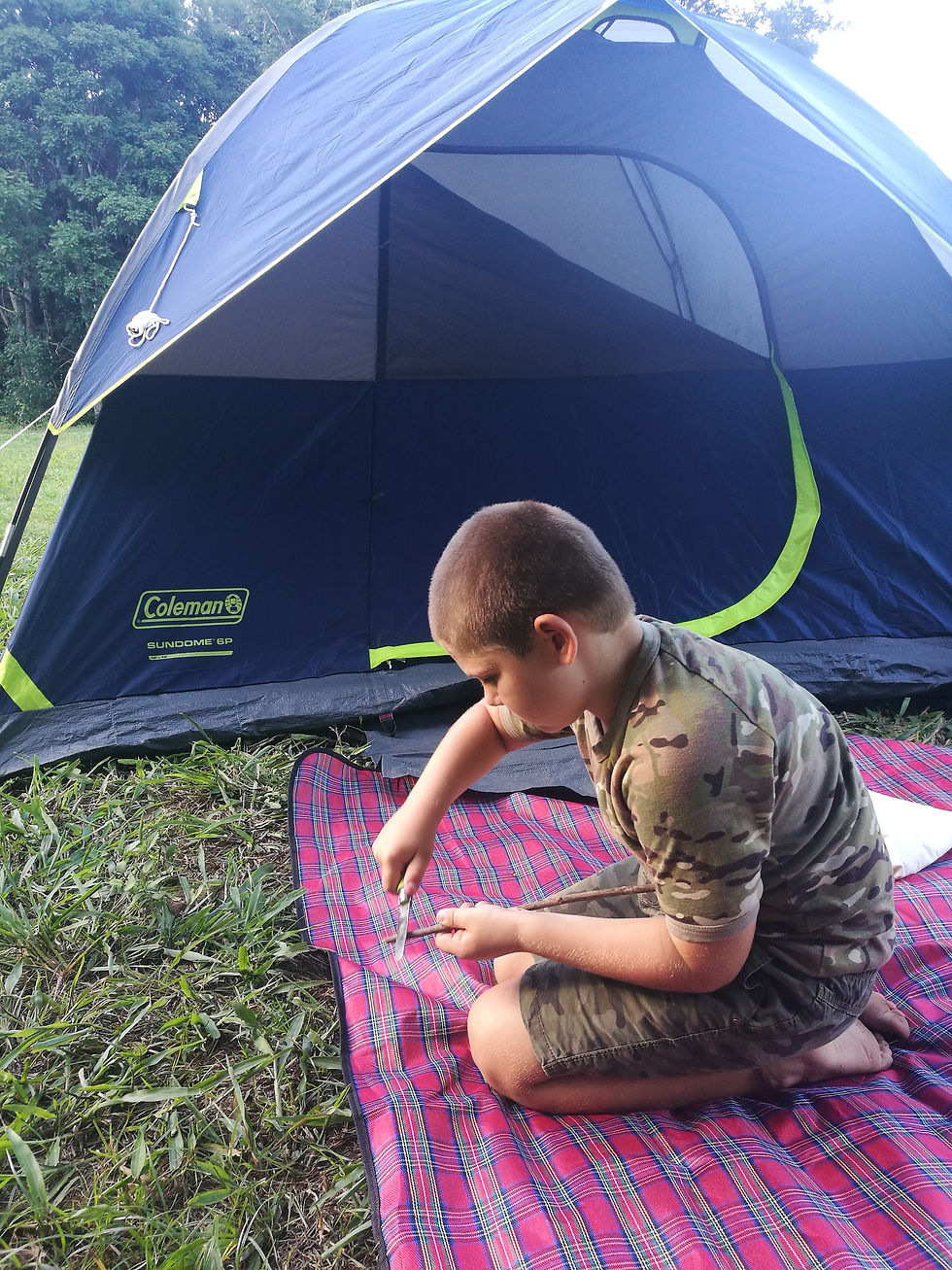Benefits of Barefoot: Your feet are stronger than you think!
- Autism & Beyond

- Apr 7, 2023
- 8 min read

Why are we such big fans of being barefoot? Two main reasons.
𝟭. 𝗦𝘁𝗿𝗲𝗻𝗴𝘁𝗵 & 𝗦𝘁𝗮𝗯𝗶𝗹𝗶𝘁𝘆. Not only does the foot benefit from being allowed to strengthen and work as it’s naturally designed, the rest of the body does too. The arch is designed to be super strong and stable but using artificial props and cushioning doesn’t allow it to be as strong as it’s meant to be, nor the ankles, knees, hips, back and neck. Walking and being physically active while barefoot, in a variety of conditions and environments, allows the foot to do it’s thing and therefore benefit the entire body. By using props and cushioning for long periods of time we can actually do harm to our joints, the opposite of why they’re worn!
𝟮. 𝗘𝗮𝗿𝘁𝗵𝗶𝗻𝗴. The benefits of earthing are well-known (even by doctors) yet still pretty underrated for the most part. When our feet connect to the earth (rocks, dirt, sand, grass, even concrete works) outside in nature we allow the natural cyclical pulsed negative charge in, balancing out the positive charge created in our body during regular day-to-day activities, which greatly impacts our health.
Strength & Stability: Information from experts
“The feet are a beautifully complex part of the body, with 26 bones, 33 joints, 4 layers of muscle and up to 200,000 nerve endings in each foot! They are our primary point of contact with the ground and so serve as our foundation for both movement and sensation, helping our whole body organise itself and adapt to our environment. This is why it is so important not to disrupt the natural function of the feet – our balance and coordination rely on both the ability to feel the ground and to move in response to the changes we feel! The muscles and joints of the feet also rely on changes in pressure and texture on the ground (for example grass, rocks, sticks, leaves etc. in a natural environment) in order to be healthy."

“our balance and coordination rely on both the ability to feel the ground and to move in response to the changes we feel”
Of course there are times when having some level of protection from the elements (extremes of heat/cold, sharp and/or poisonous things) is very important – this is where footwear can help. Unfortunately modern footwear significantly disrupts natural foot function – layers of cushioning, raised heel, narrow toe box and the rigid body in most shoes (including athletic/running shoes from ‘good’ brands) essentially blindfold the feet and greatly restricts movement. There are now plenty of companies offering ‘natural’ footwear which allow the foot to function as close to barefoot as possible.

"So for the health of our feet (and our whole body), one of the best things we can do is spend as much time as possible barefoot, outside and on a variety of natural surfaces! This gives us the chance to build a natural resilience and adaptability that protects us from aches, pains and injuries throughout our lives. If we can’t be barefoot for whatever reason, we need to be wearing shoes that promote the natural function of the feet – this is especially important for young feet that are still developing and are most responsive to challenge and exposure!”
Source: The Foot Collective
“For many decades we have been conditioned to believe we need to support our feet with tools such as shoes and orthotics.
But did you know that feet have hundreds of muscles, tendons and ligaments that are more than capable of supporting your feet, whilst optimising your balance and movement performance.

If you have become over reliant and dependent on artificial foot support, I would encourage you to begin rebuilding the strength and connection to your feet rather than masking the dysfunction.” – Paul Thompson The Barefoot Podiatrist
We know from personal experience being barefooters now for close to a decade, we feel a lot stronger all through the body because our feet are strong.

Here’s an interesting story…
A few years ago I (Aimee) did some mystery shopping work and one of the retail stores I had to assess was Athletes Foot. The staff member took me through the process of using the foot print machine to work out my foot structure to then find the right types of shoes for me. When I was finished using the machine he said, sounding very surprised, the results showed my arches were strong and my feet didn’t need any support, just neutral-style joggers. I certainly wasn’t shocked! I knew my feet were strong!
Earthing: What is it and how to get it

Earthing (or grounding) is a process of naturally connecting your body to the Earth’s natural and powerful energy by exposing your bare feet to the ground and natural surfaces. More so grass and dirt but rocks and sand work and even concrete allows some earthing energy through.
Basically it reduces oxidative stress in the body and promotes healing.
The main benefits it can have to our health are:
– improve quality of sleep
– reduce inflammation in the body
– boost immunity and reduce infection
– reduce stress and promote calmness
– promote healing and reduce pain and injury severity
– increase energy level
– improve blood circulation and heart health

How to get earthed when outdoors, indoors, and wearing shoes
Obviously, the best way to get earthing is to spend time barefoot outdoors on natural surfaces, in particular on grass and dirt, but also on rocks, sand and even concrete work too (not bitumen though). The longer we’re barefoot outside the more benefits we receive and for a longer period.
We live in a townhouse with a concrete paved courtyard and as I (Aimee) work on a computer indoors most of the time, I can feel it drain me of energy so I make time in the afternoons (on fine days) to take my laptop outside to work, with my feet on the ground. I definitely feel better from it and even find I crave it most days.

Earthing while indoors
There is such a thing! By using earthing products! We’ve been big fans of earthing bed sheets and foot mats for many years and always recommend them to our clients, especially those who simply can’t get much outdoor barefoot time in their day or week. There’s a huge variety of indoor earthing products to choose from and lots of information and scientific info to be educated on and to back-up the claims that they actually do work.
Personally we use and recommend EarthingOz products – feel free to use our affiliate link to check out what they offer and grab something for yourself and/or your family members.
My mum used to live in a unit with no access to outdoor barefoot time. She didn’t have a yard or a nice park nearby, she wore shoes to walk to the bus to work in the city in an office most days and wore shoes on her days off. She started using a foot mat while watching TV and reading, and a sheet on her bed at night, and reported she noticed definite improvements to her quality of sleep.


Wearing shoes and earthing
The only way to get earthing while wearing shoes is to wear shoes with copper plates in the soles that touch the foot and the ground at the same time. Not many companies make these one but that does, Earth Runners, have a variety of sandals.
How to transition to barefoot

Start slow if you’re not already moving around outdoors with no shoes on. Start on ‘easy’ surfaces and build up. Even a walk on soft sand at the beach, for newbies, can be incredibly harsh on the foot and leg muscles and bring on soreness and tension that can last for days. It can help to take the shoes off and walk/move for short periods, put the shoes back on when needed, and build up to longer periods barefoot over time. If you’re rarely ever barefoot at the moment then start with being barefoot inside the house – that’s level 1!
Utilise your home outdoor ground spaces even if there’s concrete. Instead of slipping the shoes on to hang the washing up outside, do it barefoot. Walk to the letterbox and take the bins out without shoes on. Sit outside barefoot to eat meals and have a cuppa. Do some gardening and maintenance without shoes on too.
Find nearby barefoot-friendly nature spaces such as beaches, parks and playgrounds to take the kids to barefoot, walks to go on (walk off the path to get far more earthing), to play outdoor games at without shoes on… without prickles and spikey seed pods which are common in Australia!
Barefoot beach walks – great for strength, stability and earthing
Try out bushwalking without shoes on for even some of the time, if not all. Depending on where you live and what tracks you have access to, some tracks might be ‘man made’ and too hard underfoot but the natural paths are a great place to start becoming used to being barefoot and getting lots of earthing. Take your usual walking shoes but spend some some not wearing them, get your feet used to the different surfaces and textures, putting the shoes back on when you need to.
Wear ‘barefoot’ shoes such as Earth Runners or Vibram Five Fingers (aka toe shoes). Or choose from one of about a zillion other brands now on the market! From office shoes to snow boots, to casual laced shoes, there are so many options now to suit most lifestyles and work situations. Starting out by swapping regular joggers/athletic shoes to Dunlop Volley’s is a great option because they’re flat, wide, affordable and long-lasting. My pair were about $25 which was a nice change from the $180+ I used to spend on Asics and all the other fancy unnecessary joggers I wore for years.

My Vibram Five Finger shoes I wear as my ‘uniform’ and sometimes out walking – they allow my toes to spread naturally and my arches to do the job they’re designed to do
Use good foot health practices such as rolling on a plastic spikey ball at night while watching TV to help loosen up the muscles and tendons in the feet (watch this video of Clint demo’ing how to do it), soak your feet in warm Epsom or Magnesium Flake foot baths regularly, and wear toe spreaders to help correct your toe alignment (our toes are meant to measure wider than the rest of our foot by the way!).
Practice natural movement by looking into MovNat, finding MovNat, CHEK and other holistic movement practitioners and programs online or in your area. We’re huge fans of MovNat, Clint’s a certified trainer, and we love that they promote barefoot and natural movement together (indoors and outdoors).

Clint doing some natural movement in the trees – walking, balancing, split squats, turning etc while barefoot for better stability
Get advice from a barefoot practitioner such as a podiatrist or physio who specialise in and promote barefoot living.
Stop listening to conventional wisdom and believing clever marketing telling us we need expensive joggers, arch support and pointy toe shoes for fashion. We don’t. We can heal and strengthen our feet without any of that.
We hope this information and our perspectives and experiences help you and your family on your journey to better health! Please email us if you have any questions.
Aimee (& Clint)
Disclaimer:
This disclaimer governs your use of Autism & Beyond website and blog. By using this website, you accept this disclaimer in full. If you disagree with any part of this disclaimer, do not use this blog, this website or any affiliated websites, properties, or companies. We reserve the right to modify these terms at any time. You should therefore check back periodically for changes. By using this website after we post any changes, you agree to accept those changes, whether or not you have reviewed them.
All information and resources found here are based on the opinions of the author unless otherwise noted. All information is intended to motivate readers to make their own nutrition and health decisions after consulting with their health care provider. I am not a doctor, lawyer, psychiatrist, therapist, or your mother, and I don’t play one on the internet.
The author of this site encourages you to consult a doctor before making any health changes, especially any changes related to a specific diagnosis or condition. No information on this site should be relied upon to determine diet, make a medical diagnosis, or determine treatment for a medical condition. The information on this website is not intended to replace a one-on-one relationship with a qualified health care professional and is not intended as medical advice.
NO information on this site should be used to diagnose, treat, prevent or cure any disease or condition.
None of the posts and articles by Autism & Beyond may be re-printed without express written permission of the author. Autism & Beyond will respond to written requests to re-print parts of posts and excerpts/quotes (10% or less) may be reprinted with attribution as long as all links are left intact.










Comments